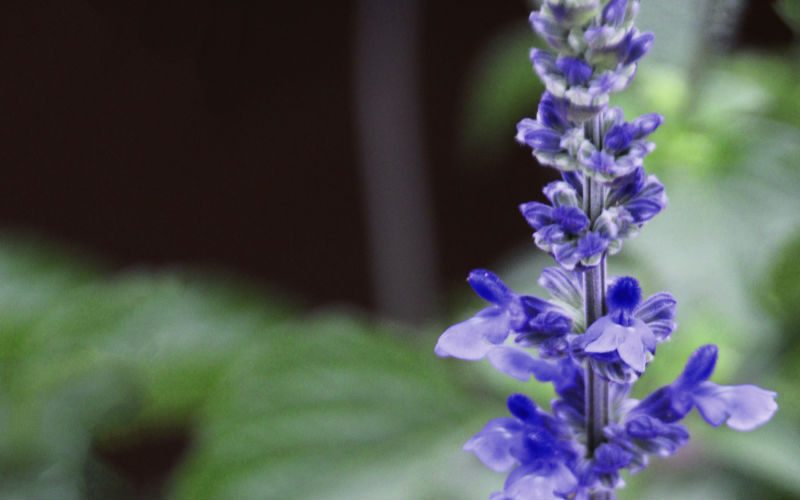
Culture Report: Salvia ‘Magic Wand’
Crossing the wild species with a farinacea has delivered an exciting new hybrid, salvia ‘Magic Wand’. An exceptionally large specimen that can grow as small as 14 to 18 inches and as tall as 24 or even 48 inches, ‘Magic Wand’ remains very upright, without falling open or breaking apart. It forms an attractive, naturally full and dense habit. It is pollinator friendly too — butterflies, bees and hummingbirds are attracted to its large purple spikes and light scent.
‘Magic Wand’ blooms constantly from spring through fall with a striking display of color. It offers great performance in the heat and humidity of summer. With its nicely mounded wild yet controlled habit, ‘Magic Wand’ excels in landscapes, pots, combinations and gardens alike. This vigorous, easy-growing variety is an excellent choice to give both growers and gardeners confidence. It will make any gardener feel successful.
To assure performance, ‘Magic Wand’ was trialed in locations across the world — in Europe, Israel and in the United States at different locations in the Midwest, Southeast, Northeast and West. Good companion plants are lysmachia, verbena, calibrachoa and many other species.
Propagation
When producing from cuttings, stick one plant per cell. Choose a well-draining, disease-free rooting media, and maintain pH at 5.8 to 6.2 and EC at 0.8 to 0.9 for weeks one and two, increasing to 0.9 to 1.0 for weeks three to five.
The following day, spray B-Nine at approximately 2,500 ppm to discourage stretching, and provide a preventive fungicide such as Daconil to protect against Botrytis. Be vigilant with monitoring and scouting throughout propagation. Keep plants moist, but not over watered, to prevent root damage. Soil temperatures should be at 72 to 74° F for the first two weeks of rooting, and then cool down to 65 to 68° F.
Feed with a 50-ppm nitrogen mist at weeks one and two; at week three switch to 100- to 150-ppm nitrogen as part of a well-balanced fertilizer. Plant growth regulators may or may not be needed after sticking; if you deem them necessary, it will likely be at week two. Use B-Nine at 3,750 ppm. This amount may be cut in half if you feel little height control is needed. Also in week two, a second application of a preventative fungicide such as Daconil should be applied.
At week three, pinch once. At week five, transplant one cutting per quart or trade gallon. After transplant, spray a preventative fungicide to protect from Botrytis. Plants will be finished and ready for spring sales in 12 to 14 weeks.
Growing On
From week five on, maintain pH at 5.8 to 6.2. EC should be held at 0.90 to 1.0 through week 14. If plant growth regulators are needed during growing on, apply a B-Nine application of 3,750 ppm or a Bonzi drench of 1 ppm, at weeks four and five. No pinching is necessary during growing on.
Provide a constant balanced feed that includes 100- to 150-ppm nitrogen. Keep plants moist, but not over watered, to prevent root damage. Greenhouse temperatures should be slightly cooler during growing on, at 65 to 68° F. Note that extending the production time for ‘Magic Wand’ allows the potential to grow at cooler temperatures.
Salvia, including ‘Magic Wand’, are not prone to many disease problems. Insect activity can be an issue as with most plants, so good management should be considered a requirement and a standard preventive program should be followed. This should include vigilant monitoring and scouting, as well as providing good air circulation and maintaining moderate humidity levels as a preventative.
For more information on salvia ‘Magic Wand’ or any of Danziger’s products, call (972) 3-9602525, e-mail danziger@danziger.co.il or visit www.danziger.co.il.


 Video Library
Video Library 




















